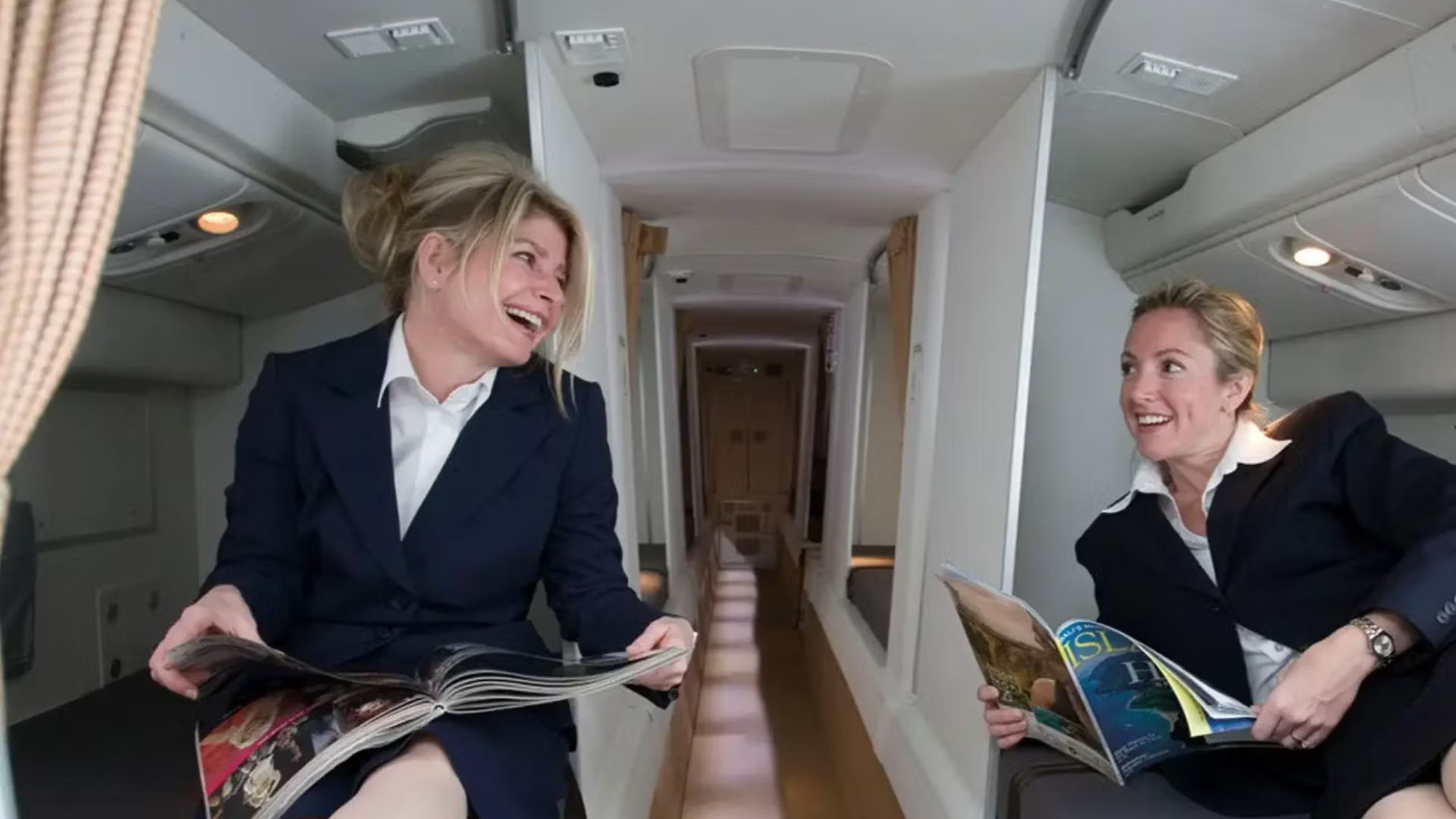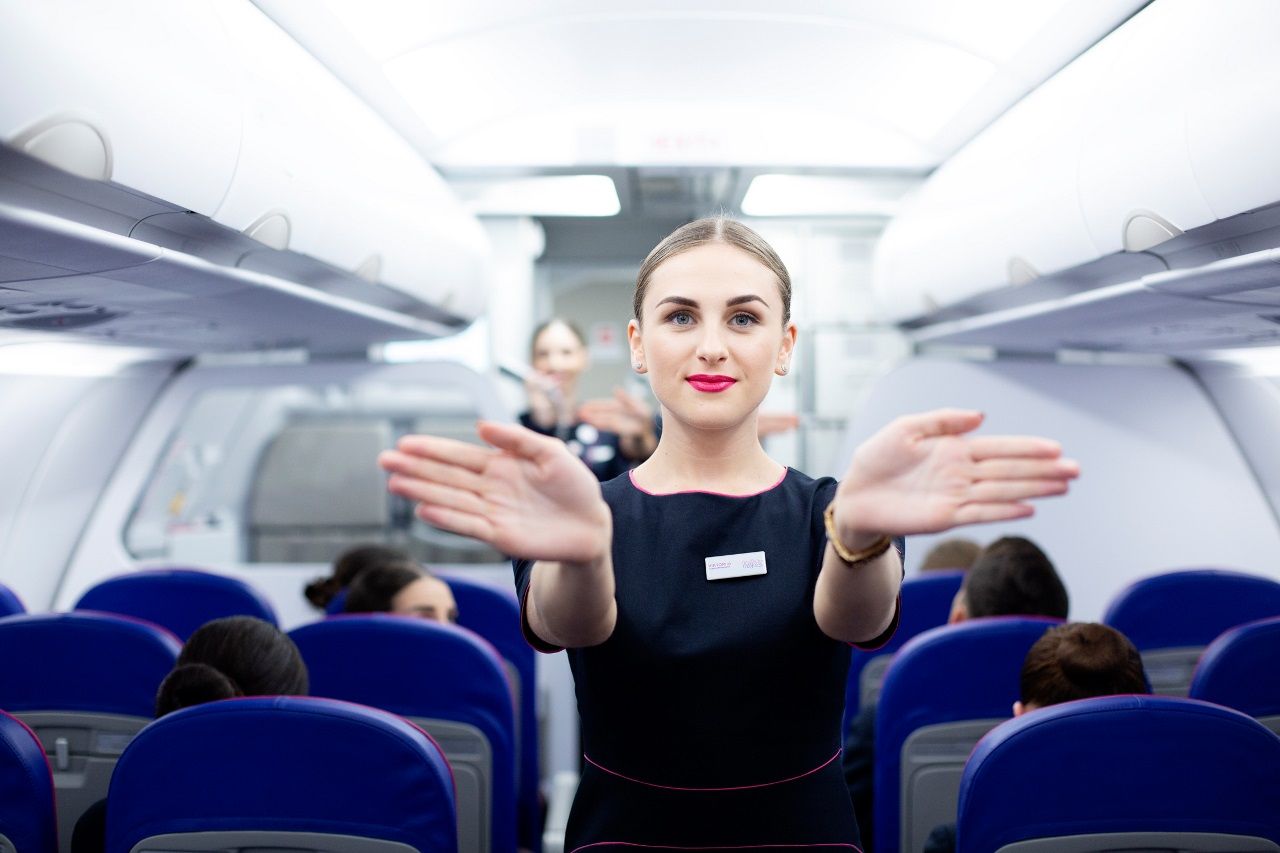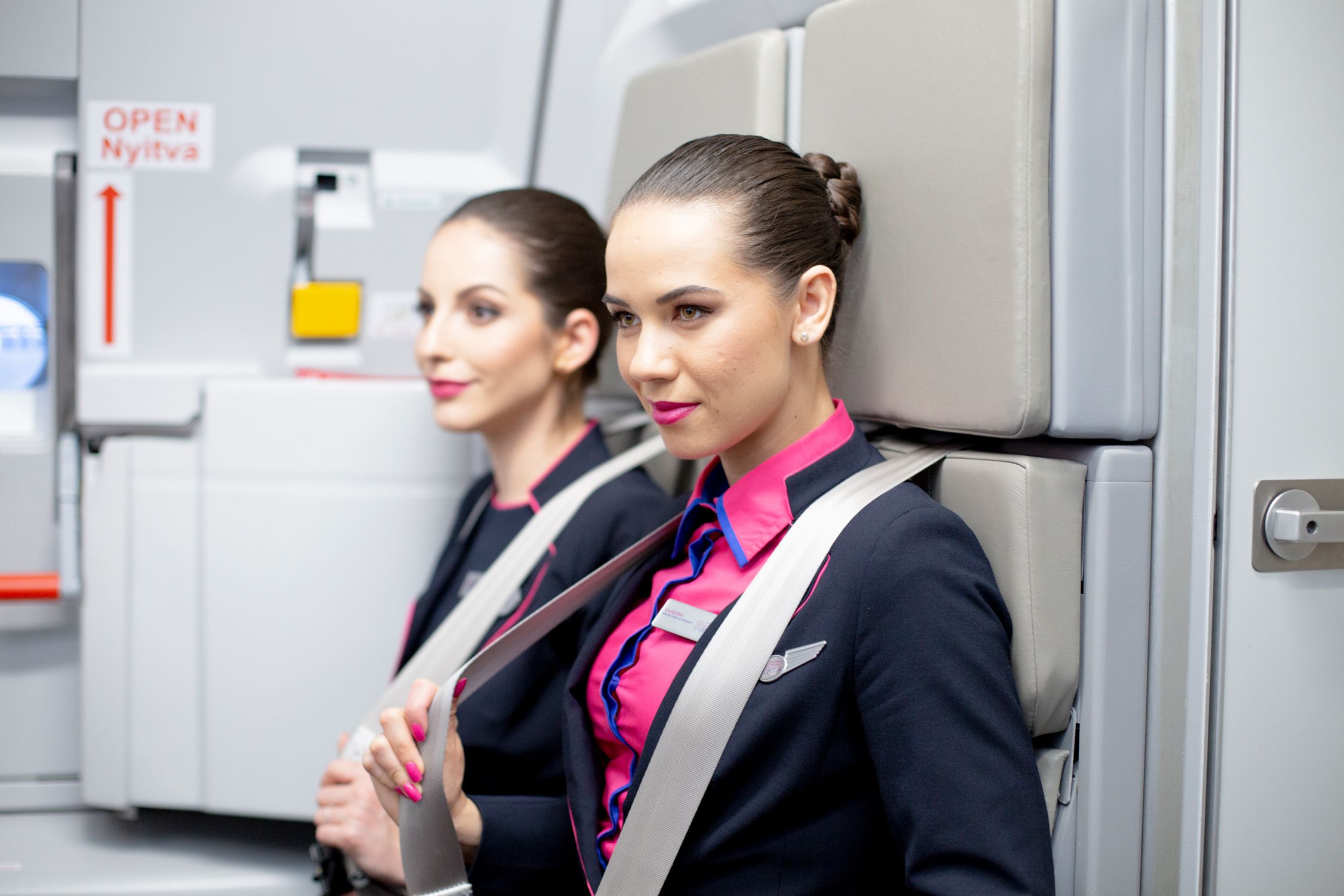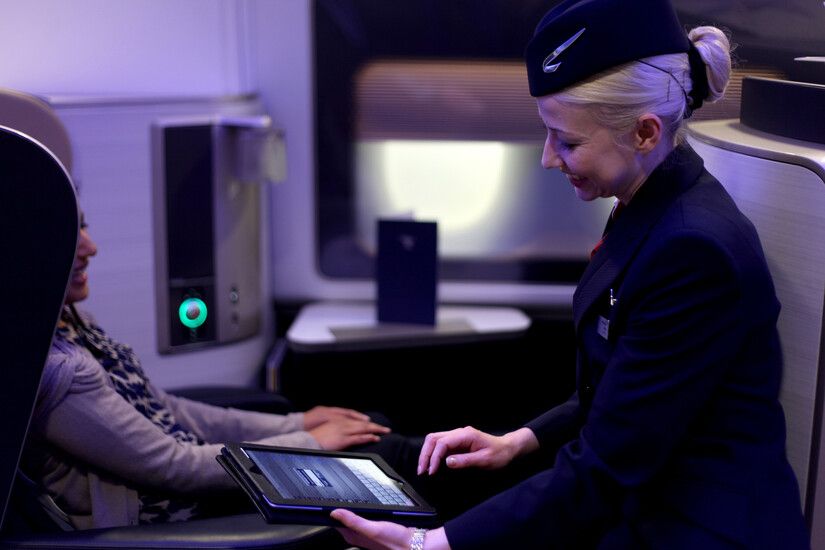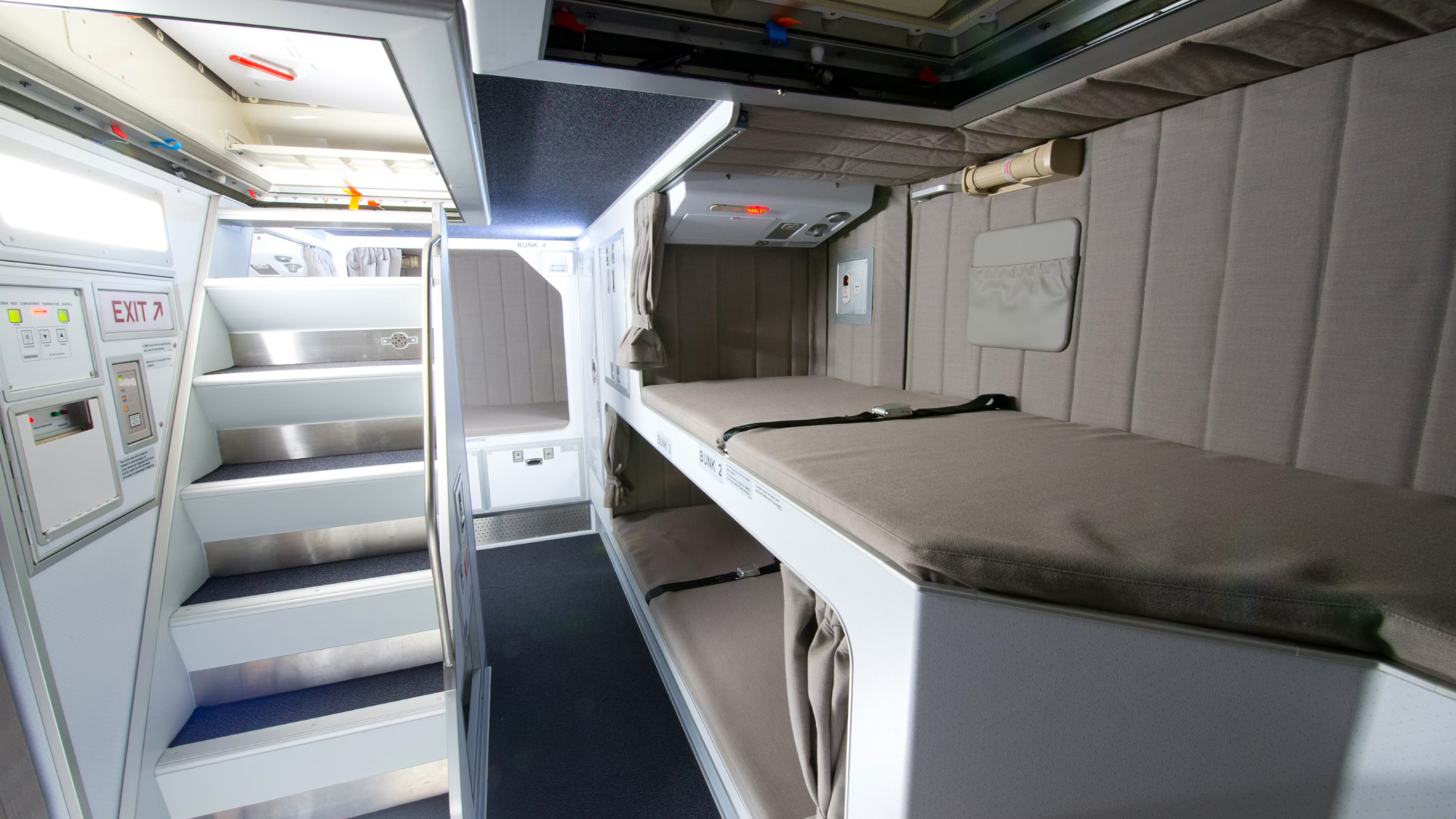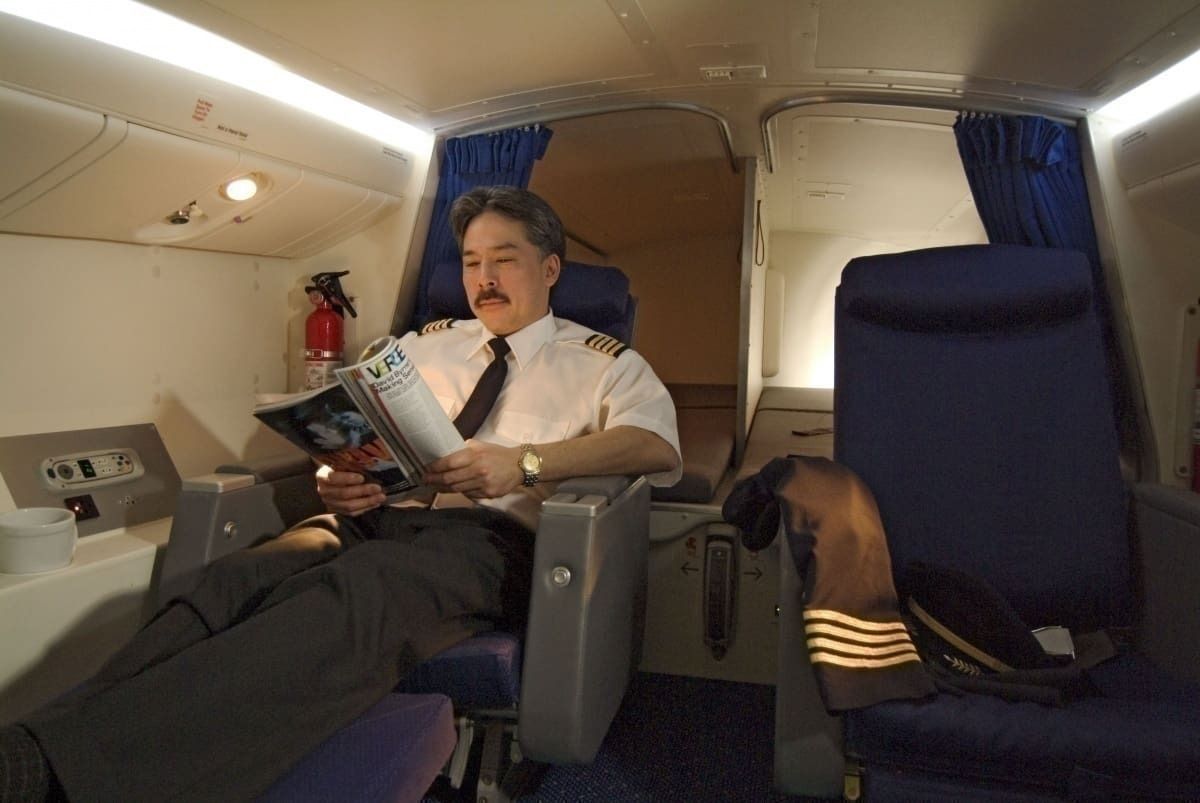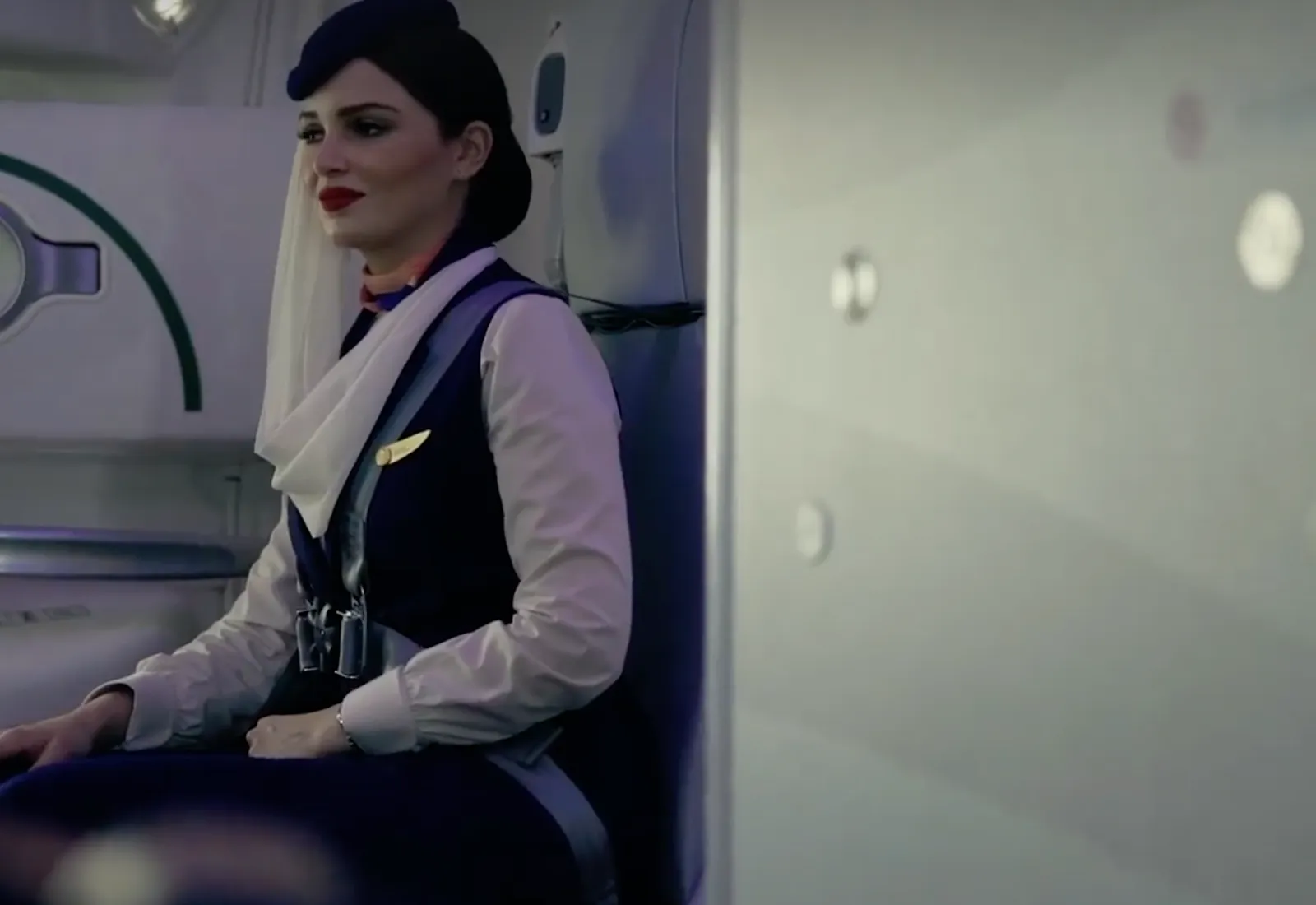Summary
- Flight attendants on short-haul flights have limited downtime, taking quick breaks during quiet moments.
- On long-haul flights, cabin crew get 1-3.5 hours of rest in designated rest areas like bunks.
- Crew members prepare for rest with pillows, duvets, and pajamas for comfort and warmth.
While fun and exciting, a flight attendant’s job requires hard work, focus, and attention to detail. Unlike a conventional 9-to-5 job with a routine start and end to the day, working as a flight attendant calls for flexibility, depending on when they are rostered. This also comes with break times that vary from flight to flight.
How busy does it get for cabin crew?
During a flight, the cabin crew is often busy ensuring the safety and comfort of passengers. From the moment passengers begin boarding, the crew actively welcomes and assists them, stows luggage, and ensures everyone is seated and seat belts are fastened.
Photo: Wizz Air
As the flight progresses, they conduct safety demonstrations, serve meals and beverages, attend to individual passenger needs, and manage any in-flight issues. Additionally, they continuously monitor the cabin for safety and security, performing checks and communicating with the flight deck.
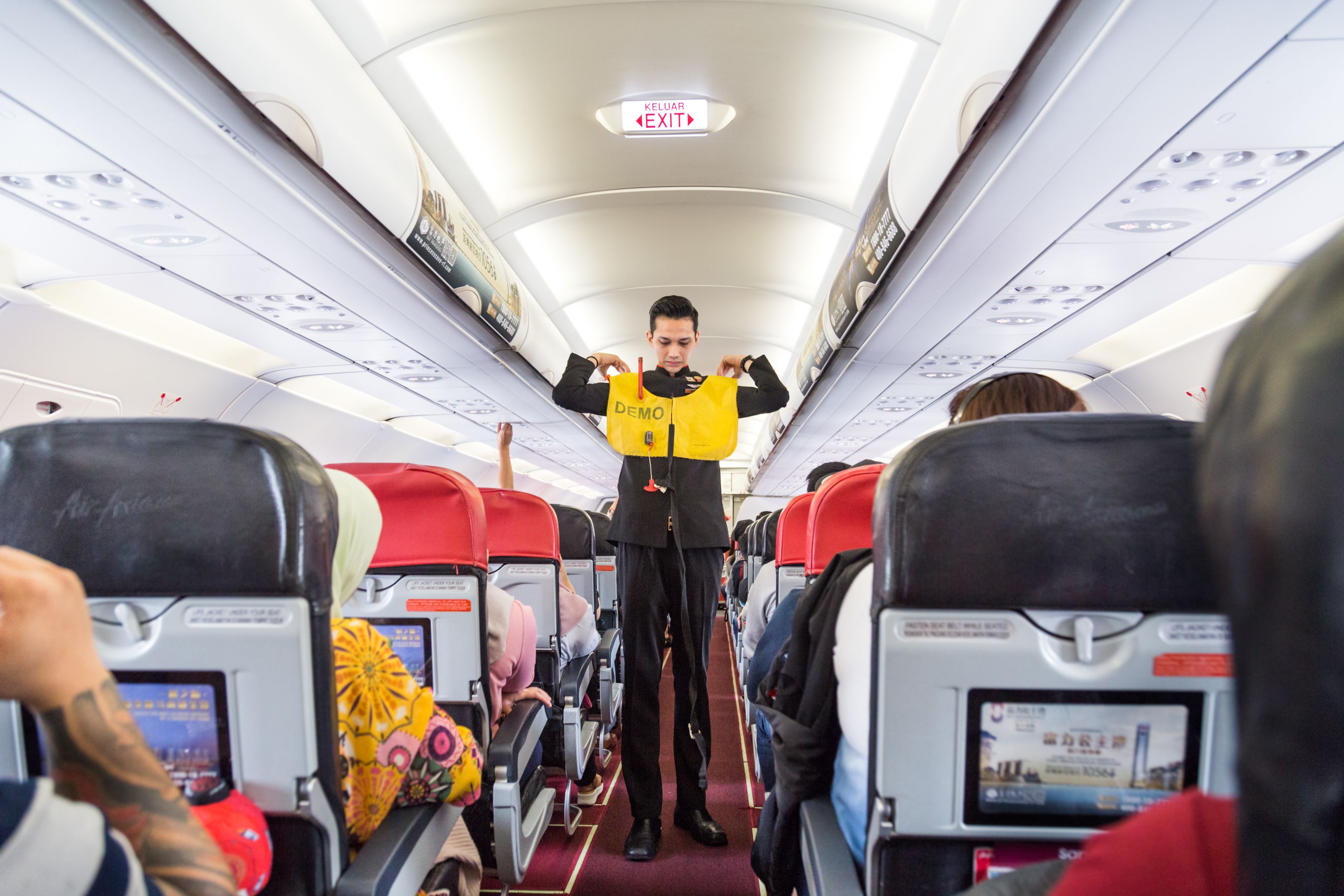
Related
Breaking Down The Safety Demonstration
A look at how it all works.
The crew also handles the disembarkation process, guiding passengers off the plane efficiently and ensuring no personal belongings are left behind. Throughout the flight, the cabin crew’s responsibilities require them to remain attentive, responsive, and proactive, maintaining a high level of professionalism and service despite the dynamic and sometimes unpredictable nature of air travel.
Beyond these well-known duties, cabin crew also take on a variety of other roles to enhance the passenger experience:
- Ensure lavatories are clean and well-stocked throughout the flight.
- Help passengers stow away their carry-on luggage, optimizing every inch of overhead bin space.
- Adjust cabin lighting and ambient music to create a relaxing atmosphere, depending on the flight phase.
Passengers witnessing this happening might wonder: do the cabin crew ever get some downtime? If so, when and what do they do during these breaks?
Short-haul flights: crunch time
On short-haul flights, there are limited windows of down-time. Due to the short period between take-off and touch-down, the cabin crew is often constantly on their feet, ensuring passengers experience the highest levels of safety and comfort.
It’s usually busy in the cabin and galley, so cabin crew don’t take breaks during these flights unless it’s very quiet or a longer (but still short-haul) flight—like a four-hour flight, for example. They might only rest for a few minutes or so by sitting on their crew jump seat and grabbing a quick meal and some water while their colleague keeps an eye on the cabin.
Photo: Wizz Air
Often, however, flight attendants do not sit down for a meal until their flight is over and they are on the ground during a turnaround. It is during these times, when the flight returns to its point of origin on the same day (or when it has reached its final destination and the crew is afforded some time on the ground), that short-haul flight attendants get a proper break.
Long-haul flights: more time to rest
On long-haul flights, it’s a different story for cabin crew. They typically get anywhere from an hour to three and a half hours of rest, depending on how long the flight is. Sometimes, it’s just a curtained-off row of seats in economy, which isn’t very conducive to sleep. In such situations, cabin crew might opt to watch some in-flight entertainment or listen to music to unwind and relax. The goal is to maximize their rest period, even if the conditions aren’t always ideal.
Photo: British Airways
Long-haul flights are operated on larger aircraft, which come with different types of rest areas, depending on the aircraft. They vary from overhead crew rest compartments, accessible via a staircase or hatch, to lower deck crew rest areas. These areas contain multiple bunks or lie-flat beds for sleeping during long flights. Some aircraft also have shared rest compartments for both pilots and flight attendants, ensuring privacy and comfort for each group.
Comfort and rest for the crew
On larger aircraft, crew rest areas can be located in the tail, cargo area, or sometimes above the cabin. These spaces are designed to help crew members get some much-needed sleep, especially on ultra-long-haul flights. To make the most of their rest time, many cabin crew come prepared with their own pillow and a small duvet, often child-sized, to fit in their bags.
A small hot water bottle is also a great addition, as it can get quite chilly. Some crew members even bring pajamas to ensure they’re comfortable. The video below shows a flight attendant’s cheat sheet on getting through a long-haul international flight.
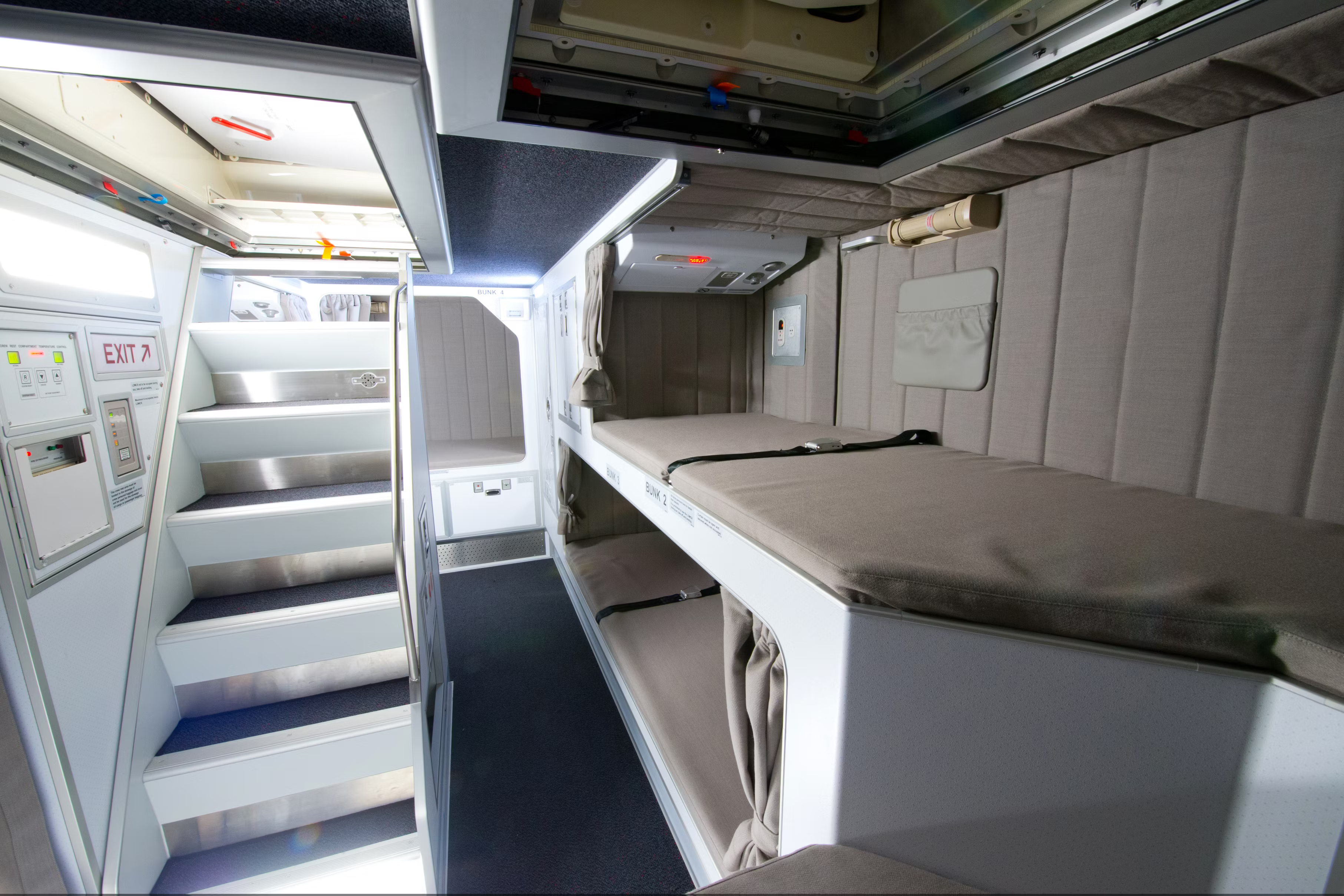
Related
The Wonderful World Of Crew Rest Areas
A closer look at the hidden areas on the aircraft where crew take their rest.
What are the alternatives?
Some cabin crew do not like the claustrophobia of crew rest areas, so they might try to sleep on their jump seat, using a curtain to create some privacy. While it’s not easy, making a makeshift bed using the two jump seats, an atlas box, and a couple of cushions is possible. However, not all crew members can sleep during their rest period. Instead, some might choose to read, listen to music, or just rest their eyes.
Now, you might wonder — what about the pilots? The flight crew has their own rest area near the flight deck. On ultra-long-haul flights, there are additional crew members so they can take turns resting. If there is no designated rest area on the aircraft, business class seats may be curtained off to allow the pilots to sleep.
Photo: Boeing
Cabin crew, please be seated for landing
As the plane approaches landing, another crew member from the active shift will go to the crew rest area to wake everyone up, typically about 10 minutes before their break ends. This allows the crew time to tidy their hair, brush their teeth, reapply makeup, spray some scent, and do whatever else they need to freshen up. The working crew will then swap places with those who were resting, preparing everyone for the landing.
Photo: Saudia
Cabin crew rest areas are a vital component of modern aviation, designed to ensure that both flight attendants and pilots can perform their duties with optimal efficiency and safety. These rest areas, varying from overhead compartments to lower deck bunks and designated reclining seats, provide the necessary respite during long-haul flights. By offering private, comfortable spaces for rest, airlines not only comply with regulatory requirements but also prioritize the well-being and performance.

